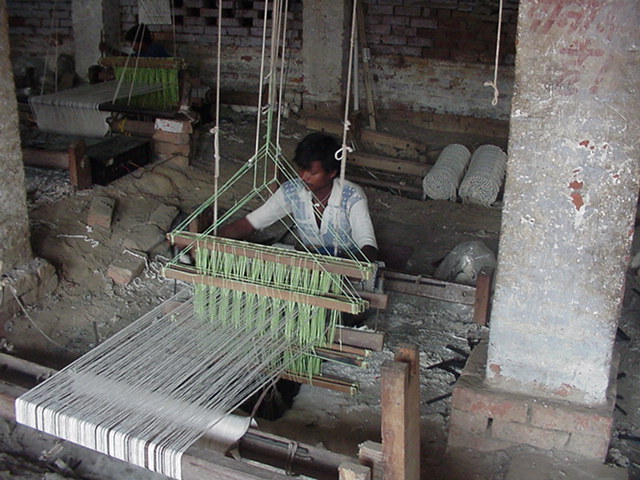The marriage of computers and manufacturing is rapidly moving us towards mass customization. What does that mean? Neil Gershenfeld, Director of the MIT Center for Bits and Atoms, calls this technology fabrication for a market of one.
I always like to start these discussions with a little bit of historical context. Before the Industrial Revolution manufacturing all over our world was done largely as a cottage industry. This type of manufacturing involved intensive individual production of goods. A business would come up with a product and then farm out its manufacture to the local population which would produce the product within their homes. When the development of manufacturing using non-human power sources replaced small-scale cottage production with mass-produced goods from assembly lines, businesses no longer brought the work to the cottages. Instead the cottagers assembled in large manufacturing facilities creating a few standardized designs using common equipment. Customization was sacrificed in the process.
When Henry Ford created his assembly line for the Model T he informed all customers that they could have one of his cars in the colour of their choice as long as it was black. His competitors soon caught on and started offering their vehicles in different colours. Customization through colour soon begat other options and by the mid-20th century a wide range could be applied to any vehicle during assembly along the production lines, or at the dealership where individuals bought cars. You could get different paint, trim, headlight treatments, roofs, tires and so on.
Customization was further stimulated by the computer industry and in particular by one manufacturer who made it a competitive differentiator. That was Dell, the Texas PC manufacturer. If you have ever gone online to purchase a computer from Dell, and I have done this several times over the years, then you have experienced a version of mass customization. You visit the site and determine which type of computer model is best suited for you. Then you begin to build your system to meet your preferences. At each stage of the process Dell shows you the incremental cost and final cost when you have added the last of the bells and whistles. You then complete your order and track it from production through to shipping.
The Dell experience gives us a reasonably good definition of this mass customization process – a manufacturing system that produces customized goods using mass production efficiency. But what Dell is doing is only the beginning of a revolution that is altering our material world in this century. The combination of computer numerical control, computer-aided design, and printing technology are leading us to a process called fabbing.
Fabbing is the term scientists and engineers are using today for digital fabrication. Through the deployment of a range of digital technology, including rapid prototyping, laser cutting, and computer numerical control, a fabber (a small self-contained digital fabrication factory) has the ability to do mass customization and manufacturing-on-demand for an audience of one. Let’s talk about an example of how this works. You create or find a design of something you want on the Internet. You download the instructions for that object. You send the instructions to your 3-D printer and the printer creates the finished goods in three dimensions. This is being done today with 3D printers that are available for under $5,000. Desktop Factory, a company located in Rock Hill, South Carolina, has as its mission to make 3D printing as common in offices, factories, schools and homes as laser printers are today. A 3D printer uses the same type of technology as inkjet printers. The difference is instead of ink and a 2-dimensional plane, the 3D printer builds objects layer by layer using a composite plastic powder and a halogen light. The cost of the materials amounts to $1 per cubic inch (16.387 cubic centimeters).
Today’s 3D printing is just a start. What if the printer could draw on almost any kind of material to fabricate objects. This would be the equivalent of the replicator in Star Trek. How far away are we from this capability? Today fabbing using polymers, ceramics, metals and resins allows biomedical manufacturers to create custom-designed prosthetic devices for implantation in humans. Nanoscale fabbing for computing and medical diagnostics represents an area at the forefront of practical research. At the University of Kentucky, engineering researcher, J. Todd Hastings, has developed a process that uses electrons beamed through a liquid to deposit various materials including gold and platinum onto a one nanometer spot, creating a detailed nanoscale pattern similar to the etching of a circuit board. But unlike a silicon wafer, the scale of this engineering feat is 50,000 times smaller than a human hair.
In our next discussion we will look at self-replicating machines and where science and technology is taking us.










Hi Len:
I’m the marketing manager for Stratasys, the leading maker of additive fabrication systems. If your readers are interested, they can find real world examples of how our 3D printers and 3D production systems have helped designers and manufacturers save money and significantly cut their time to market at: http://www.dimensionprinting.com or http://www.fortus.com.
Hi Sharon, My first introduction to rapid prototyping came three years ago when I visited a trade show and saw a printing exhibit with 3D models. The technology they were using to create architectural models looked very similar to the printers you display on your home page. I gave them a challenge, to render a cityscape in a 3D model using data from photogrammetry. They were successful in generating several 3D cityscapes showing buildings and landscape to scale, including even the facings on the buildings. The biggest challenge was getting the cost to be competitive with other modeling technology. Do you see Dimension Printing producing a 3D printer along with materials that can be operated in the home for under $1,000 in the near future?